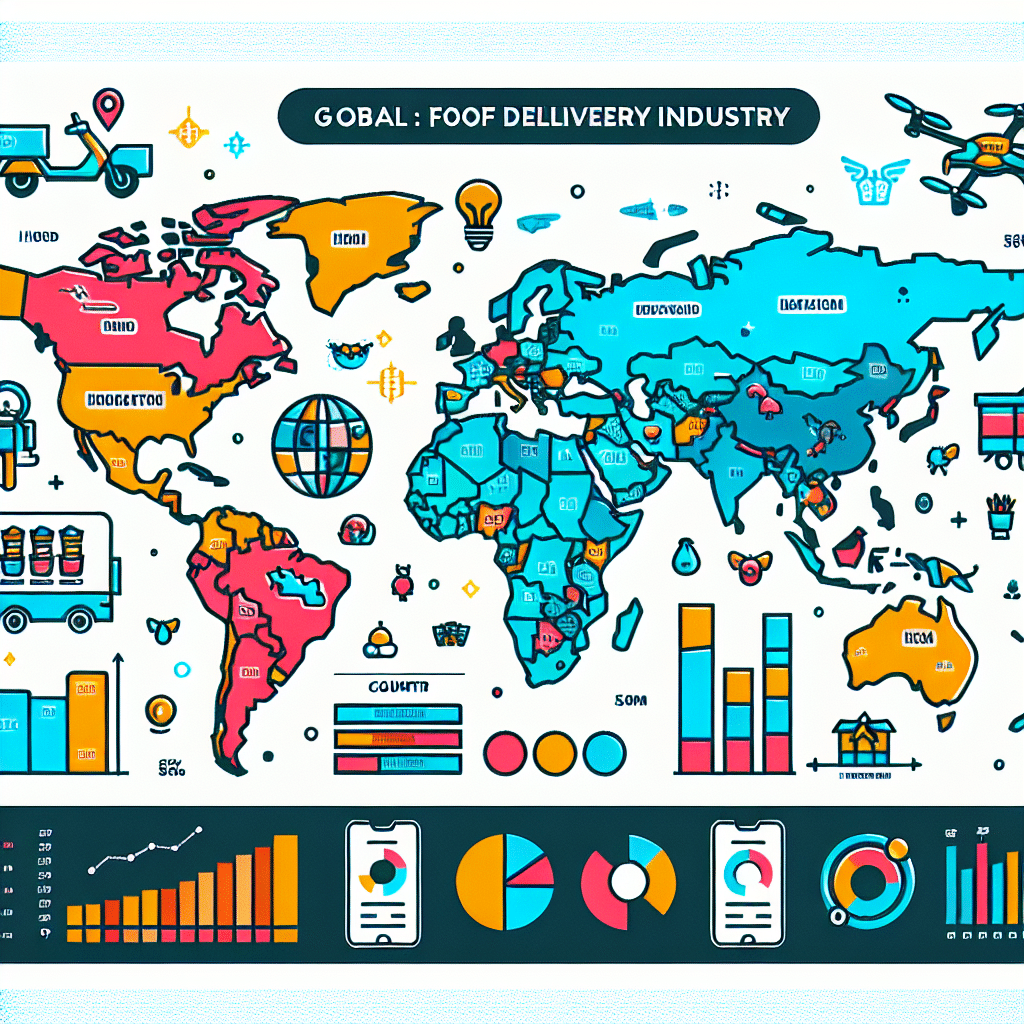Foodservice Delivery Global State: Industry Analysis
-
Table of Contents
- Foodservice Delivery Industry: A Global Analysis and Outlook
- Current Landscape of Foodservice Delivery
- Market Growth and Statistics
- Consumer Behavior and Preferences
- Technological Advancements
- Challenges Facing the Industry
- Case Studies and Success Stories
- Future Prospects and Trends
- Conclusion
- ETprotein: Enhancing Foodservice Delivery with Quality Protein Products
Foodservice Delivery Industry: A Global Analysis and Outlook

The foodservice delivery industry has undergone a significant transformation over the past decade, with the advent of digital technology and changing consumer behaviors driving growth and innovation. This article provides an in-depth analysis of the global state of the foodservice delivery industry, examining current trends, challenges, and future prospects.
Current Landscape of Foodservice Delivery
The foodservice delivery market has expanded rapidly, becoming an integral part of the restaurant and food industry. The convenience of ordering food with a few clicks on a smartphone has revolutionized the way consumers dine. The proliferation of delivery platforms and services has also contributed to the industry’s growth.
- Third-party delivery services like Uber Eats, DoorDash, and Deliveroo have become household names.
- Restaurants are increasingly adopting online ordering systems to cater to the demand for home delivery.
- Cloud kitchens and virtual restaurants are emerging as cost-effective models for food delivery.
Market Growth and Statistics
Statistical data highlights the exponential growth of the foodservice delivery industry. According to a report by Grand View Research, the global food delivery services market size was valued at USD 126.91 billion in 2021 and is expected to expand at a compound annual growth rate (CAGR) of 11.4% from 2022 to 2030.
- Asia Pacific is projected to witness the fastest growth due to the increasing adoption of smartphones and internet services.
- North America and Europe continue to be significant markets with a high demand for convenience and quick-service restaurants.
Consumer Behavior and Preferences
Consumer preferences have shifted towards convenience, variety, and health-conscious options. The rise of health and wellness trends has influenced menu offerings, with many delivery services now featuring healthier choices and accommodating dietary restrictions.
- Millennials and Gen Z are the primary drivers of the on-demand food delivery market.
- There is a growing demand for plant-based and organic food options in delivery menus.
Technological Advancements
Technology plays a pivotal role in the evolution of foodservice delivery. Innovations such as artificial intelligence (AI), machine learning, and data analytics are being leveraged to enhance customer experiences and operational efficiency.
- AI-powered chatbots and voice ordering are streamlining the ordering process.
- Data analytics helps businesses understand consumer patterns and personalize offerings.
- Delivery drones and autonomous vehicles are being tested to reduce delivery times and costs.
Challenges Facing the Industry
Despite its growth, the foodservice delivery industry faces several challenges that could impact its sustainability and profitability.
- High commission fees charged by third-party delivery platforms are a concern for restaurants.
- Ensuring food quality and safety during transit remains a significant challenge.
- Competition is fierce, with many players vying for market share.
- Regulatory hurdles and labor issues, such as the classification of delivery drivers, are ongoing debates.
Case Studies and Success Stories
Several companies have successfully adapted to the changing landscape of foodservice delivery. For instance, Domino’s Pizza has invested heavily in digital ordering technology, making it a leader in the delivery space. Similarly, ghost kitchen startups like Kitchen United and CloudKitchens are capitalizing on the low overhead costs of operating without a dine-in space.
Future Prospects and Trends
The future of foodservice delivery is likely to see continued growth and innovation. Trends such as sustainability, with a focus on eco-friendly packaging and reducing carbon footprints, are becoming increasingly important. Additionally, the integration of virtual reality (VR) and augmented reality (AR) could provide unique and immersive ordering experiences.
- Expansion into new markets and rural areas is expected as companies seek to increase their reach.
- Personalization and customization of orders will become more sophisticated.
- Partnerships between restaurants and supermarkets for meal kit delivery are on the rise.
Conclusion
The foodservice delivery industry is at a pivotal point, with technology, consumer behavior, and innovative business models shaping its future. While challenges exist, the potential for growth and transformation is immense. Companies that can adapt to the changing landscape, prioritize customer experience, and leverage technology will likely emerge as leaders in this dynamic industry.
ETprotein: Enhancing Foodservice Delivery with Quality Protein Products
As the foodservice delivery industry evolves, the demand for high-quality, nutritious ingredients is on the rise. ETprotein is well-positioned to meet this demand with its extensive range of organic bulk vegan proteins and L-(+)-Ergothioneine (EGT). Their products, known for their neutral taste and allergen-free attributes, are ideal for foodservice providers looking to enhance their menu offerings with healthy, plant-based options.
ETprotein’s commitment to quality and customer service makes them a valuable partner for businesses in the foodservice delivery industry. By incorporating ETprotein’s products into their menus, companies can cater to health-conscious consumers and differentiate themselves in a competitive market.
About ETprotein:
ETprotein, a reputable protein and L-(+)-Ergothioneine (EGT) Chinese factory manufacturer and supplier, is renowned for producing, stocking, exporting, and delivering the highest quality organic bulk vegan proteins and L-(+)-Ergothioneine. They include Organic rice protein, clear rice protein, pea protein, clear pea protein, watermelon seed protein, pumpkin seed protein, sunflower seed protein, mung bean protein, peanut protein, and L-(+)-Ergothioneine EGT Pharmaceutical grade, L-(+)-Ergothioneine EGT food grade, L-(+)-Ergothioneine EGT cosmetic grade, L-(+)-Ergothioneine EGT reference grade and L-(+)-Ergothioneine EGT standard. Their offerings, characterized by a neutral taste, non-GMO, allergen-free attributes, with L-(+)-Ergothioneine purity over 98%, 99%, cater to a diverse range of industries. They serve nutraceutical, pharmaceutical, cosmeceutical, veterinary, as well as food and beverage finished product distributors, traders, and manufacturers across Europe, USA, Canada, Australia, Thailand, Japan, Korea, Brazil, and Chile, among others.
ETprotein specialization includes exporting and delivering tailor-made protein powder and finished nutritional supplements. Their extensive product range covers sectors like Food and Beverage, Sports Nutrition, Weight Management, Dietary Supplements, Health and Wellness Products, and Infant Formula, ensuring comprehensive solutions to meet all your protein needs.
As a trusted company by leading global food and beverage brands and Fortune 500 companies, ETprotein reinforces China’s reputation in the global arena. For more information or to sample their products, please contact them and email sales(at)ETprotein.com today.














